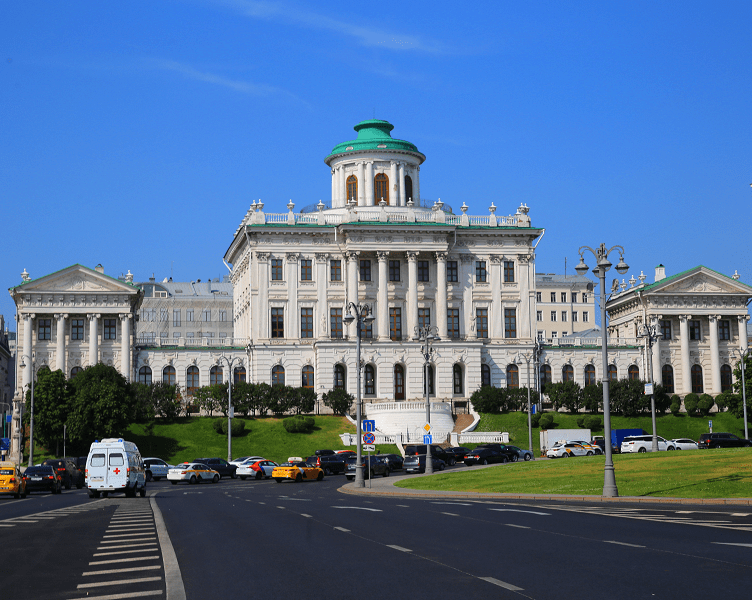The Pashkov House is one of the most famous classical buildings in Moscow, now owned by the Russian State Library. It is designed (presumably) by Vasily Bazhenov.
The Pashkov House was built in 1784-1786 by order of the captain-lieutenant of the Life Guards of the Semyonovsky Regiment Pyotr Yegorovich Pashkov, presumably, according to the project of the architect Vasily Ivanovich Bazhenov. Throughout the 20th century, different points of view were expressed on the issue of its authorship since no written evidence has been preserved. The only thing that proves its belonging to Bazhenov is the oral tradition and the architectural Bazhenov style.
In 1861, the building was transferred to store the collections and library of the Rumyantsev Museum.
In 1921, in connection with the receipt of more than four hundred abandoned, ownerless and nationalized book collections in the museum after the revolution, all museum departments were removed from the Pashkov House.
Only the museum library remained in it, renamed and transformed into the famous State Library of the USSR. V. I. Lenin, the building was assigned to the Department of Rare Manuscripts. Currently, the Pashkov House is part of the library building complex. However, it has not been used for many years, as it was constantly being renovated, which began in 1988 and ended in 2007.
Currently, in the right wing of the Pashkov House, there is a department of manuscripts, and on the left – a musical department and a department of cartographic publications, which opened for readers in April 2009.
The building has a diverse and interesting silhouette because it comprises three compact architectural volumes: the central building and side wings.
Pashkov’s house has two main facades – one faces the roadway and has a palace, solemn character. The other is oriented to the courtyard and has a more comfortable estate look.
The facade overlooking Mokhovaya street is characterized by its length. The composition rotates centrifugally in all directions. The building is crowned with a round belvedere. Two one-story galleries depart to the right and left of the central cubic array, ending with two-story outbuildings. And in the central building, columned porticoes are put forward on both sides.
Nearest metro: Alexander Garden, Borovitskaya, Lenin Library, Arbatskaya (Filyovskaya Line), Arbatskaya (Arbatsko-Pokrovskaya line).
Nearest attractions: Arbat street, New Arbat Avenue, Maly Theatre, Manezhnaya Square, Ploschad Revolyutsii (square), State Duma building, House of the Unions, Teatralnaya Ploschad, TSUM, Monument to Alexander Ostrovsky, Tretyakovskiy proezd, Central Children’s Store, Lubyanka Building, Metropol Hotel, Moskva hotel, Red Square, Tverskaya street.
See also Architecture of Moscow, Palaces and most historic buildings of Moscow.












